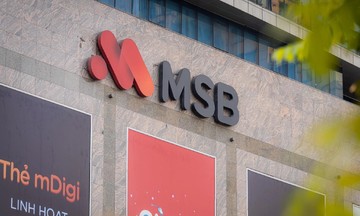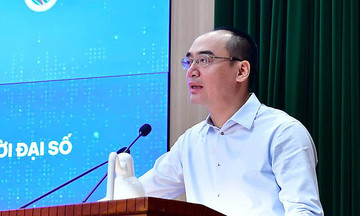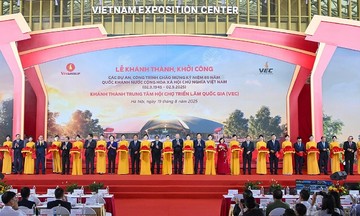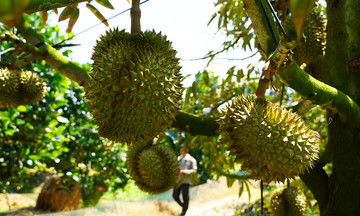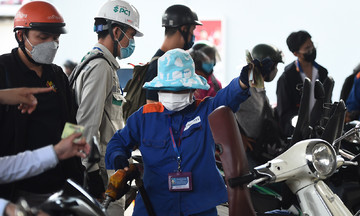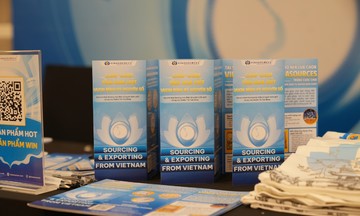Tens of thousands of drivers travel along the interstate highway connecting Los Angeles and Las Vegas every day. As they cross the desert, few realize they are passing one of the world's most strategically important reserves.
This is America's only active rare earth mine, located off Interstate 15 in Mountain Pass, California. After years of inactivity due to bankruptcy, it was purchased and restarted production in 2017. While refining and production are still in their early stages, the resumption of mining comes at a time of import supply shortages.
Rare earths are crucial components in many industries, from computer chips to aircraft engines. But like most other countries, the US has relied on China for its supply. Recently, as trade tensions between the two superpowers have increased, rare earths have become a powerful bargaining chip for China.
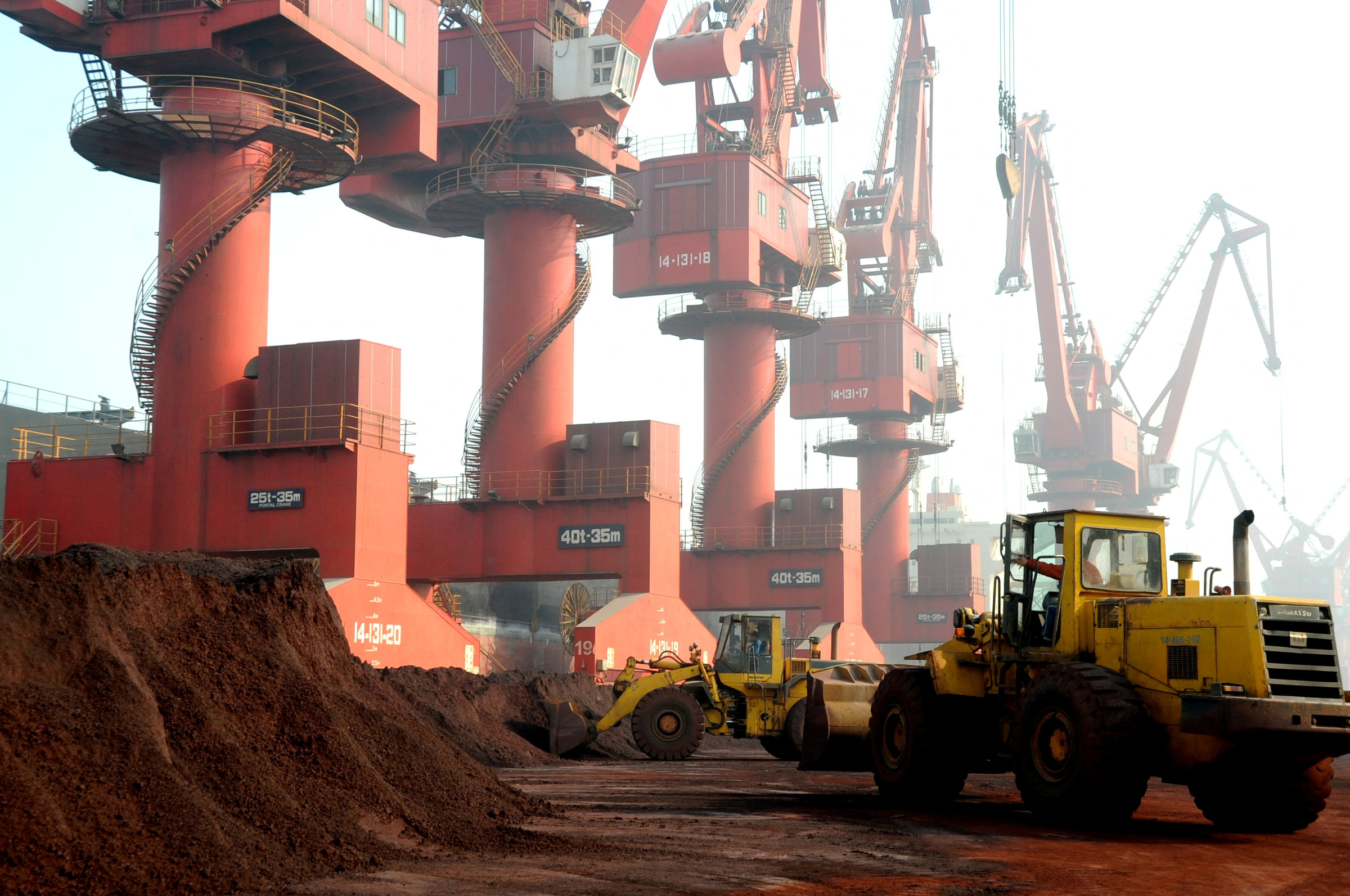 |
Rare earth elements at Lianyungang, Jiangsu, China. Photo: Reuters |
Rare earth elements at Lianyungang, Jiangsu, China. Photo: Reuters
Bert Hofman, visiting professor at the East Asian Institute of the National University of Singapore and former World Bank country director for China, believes that recent negotiations have revealed two key insights to Chinese leaders.
"One is that they really have leverage with the US and other countries through their control of key minerals. And two, the US is very sensitive to the use of that leverage," he commented.
President Trump viewed China's agreement to allow the resumption of rare earth exports to the US as a negotiating victory. Not only is the US dependent, but a global rare earth crisis recently unfolded as Beijing tightened export license approvals. Last month, China's rare earth magnet sales to the world halved compared to April, reaching their lowest point since early 2020.
The rare earth supply chain converges on China.
With the global rare earth supply chain vulnerable to China's decisions, a classic question resurfaces: if these minerals are so crucial, why don't countries produce them themselves?
According to the World Economic Forum (WEF), rare earths aren't truly rare. However, large-scale extraction requires high investment costs, specialized equipment, advanced technical skills, and stringent approval processes, not to mention the potential environmental impact.
Factors like cost, environmental concerns, and efficiency have led countries to rely on other nations for rare earth production and import the finished products. The history of the Mountain Pass mine in California serves as a prime example.
The story begins with the Molybdenum Corporation (which operated the Mountain Pass mine). Founded in 1919, Molybdenum took its name from a super-durable metal mined in New Mexico, used in Japanese swords, German cannons, and later in rocket technology.
In 1950, they acquired mining rights in a highland area of the Mojave Desert after discovering a rare earth-containing mineral called bastnaesite. By 1961, they began funding research on rare earths. The discovery of an element that could enhance the red color in color TVs fueled a production surge.
The rare earth market has experienced its share of ups and downs. Molybdenum changed its name, was acquired, and its revenue declined as the catalytic role of rare earths in oil refining diminished in the 1980s. In 2002, amidst globalization, the company's mining operations at Mountain Pass ceased due to contaminated groundwater and insurmountable competition from China.
Around the same time, downstream supply chains also moved away from the US, as a rare earth magnet manufacturer in Indiana relocated its entire operation to China. According to the company's former CEO, they were losing 5 million USD annually. Moving production closer to the source material was seen as a logical choice.
As of 2023, China accounted for over 69% of global rare earth production and about 90% of rare earth magnets, essential materials for electric vehicles and wind turbines. Demand for rare earths is surging and projected to continue rising.
Negotiations and revival plans are underway.
Following the US's initial success in persuading Beijing to resume rare earth exports, European Union (EU) leaders will also leverage their summit with China later next month to push for better access to these materials.
European Commission President Ursula von der Leyen and European Council President Antonio Costa will personally attend the event amid concerns from automakers that China's restrictions on exports of rare earth alloys, mixtures, and magnets could disrupt production. Two Reuters sources indicated that the EU delegation's primary focus will be rare earths.
China's Ministry of Commerce announced in May the establishment of a "green lane" to expedite rare earth export licensing for EU businesses. However, an EU diplomat revealed that less than half of the hundreds of submitted applications have been processed.
"The situation is improving, although the approval rate remains volatile. Furthermore, even with approved licenses, customs clearance can still be delayed," said Adam Dunnett, secretary general of the European Chamber of Commerce in China. Another EU official observed that China is "playing a very clever game" by identifying rare earths as a strategic weakness for the West.
Beyond negotiations, ideas for reviving rare earth production have emerged in anticipation of potential supply disruptions. "It is no coincidence that nations are shifting their perspectives amidst increasingly fragmented global trade relations and rising protectionism," the WEF commented.
A turning point occurred in 2023 in the US when the new owner of the Mountain Pass mine began separating rare earths themselves, instead of relying on a Chinese company as before, thus "repatriating core national security capabilities."
In early 2025, they started producing rare earth magnets in Texas. The company is hiring, with rock crusher operator positions offering wages of up to 36.80 USD per hour, four times the average mining wage in China.
In Oklahoma, the atmosphere of revitalizing the mining industry is even more vibrant. At the foot of the Wichita Mountains sits a two-story warehouse housing the only machine in the US capable of refining nickel, owned by startup Westwin Elements.
Not only does Oklahoma boast the nation's sole nickel refinery, but the state also has the country's largest lithium refinery, two lithium-ion battery recycling facilities, a rare earth magnet plant, and several e-waste collection facilities under construction or in operation – more than any other state.
Furthermore, for the first time since 1980, an aluminum smelter is slated to begin construction next year near a tributary of the Arkansas River. Oklahoma Governor Kevin Stitt is actively promoting investment in critical minerals. "I've proactively pursued new industries that I believe will play a key role in the future," he stated.
Despite lacking abundant mineral deposits, Oklahoma is highly regarded by investors and businesses due to several advantages: rail and highway systems connecting to all three coastal regions of the US; an experienced energy workforce; state tax refunds and financial incentives; a major inland port with connections to the Mississippi River basin; and streamlined permitting processes.
Local officials promote Oklahoma as the "one-call state," implying that administrative procedures are simplified to the utmost. MLB Industrial, an Australian startup supplying lithium-ion batteries for railcar locomotives, came to Oklahoma earlier this year for that reason. "We have long-term development plans here," said CEO Nathan Leech.
Besides the US, several other countries possess substantial rare earth reserves. For example, Australia and India are believed to have reserves at least three times larger, while Brazil may have about ten times more than the US. All are aiming to boost production, according to the WEF.
Westwin Elements has established a pilot facility about 137 km from Oklahoma's state capital, capable of refining 200 tons of nickel annually, with a goal of increasing to 34,000 tons by 2030. If successful, their facility could meet 10% of US nickel demand, according to estimates from analytics firm Benchmark Mineral Intelligence.
Founder KaLeigh Long harbors high hopes, similar to the meaning behind her company's name: Westwin, signifying "The West will win."
Phien An (according to WEF, Reuters, CNN)




